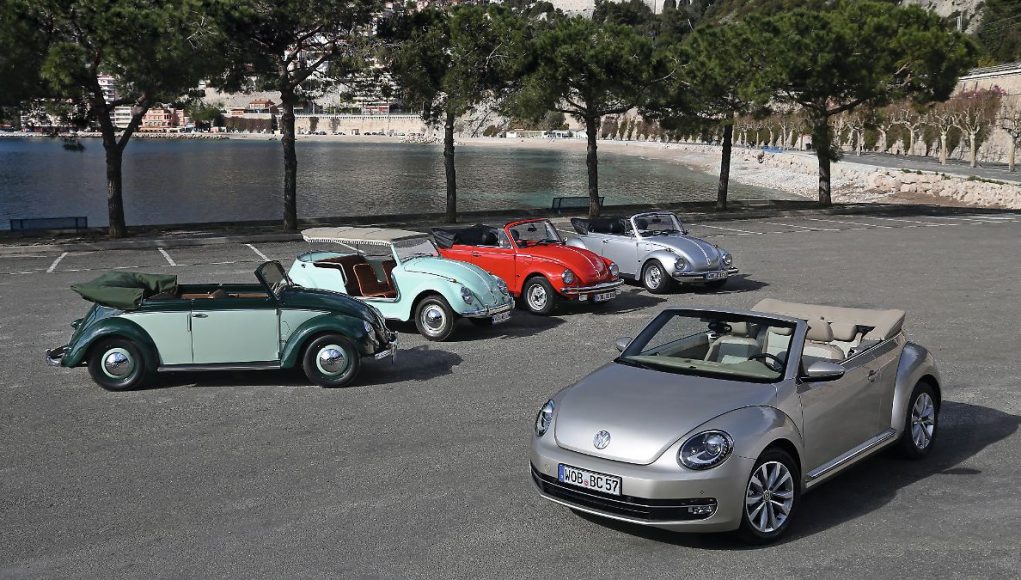With the open T-Roc, VW's last convertible dies. This marks the end of a long tradition that once began with the Beetle-based Hebmüller convertible. A look back at the long history of VW convertibles.
When the car was invented, it was topless. The automobile was once born as a convertible with generally poor weather protection. For many years, the open beauties were a natural part of every major manufacturer's inventory. But the wind has changed. According to the Federal Motor Transport Authority (KBA), just 51,984 convertibles were newly registered across Germany in 2023. In the heyday of fresh air vehicles the number was more than twice as high; in 2008 the KBA registered 131,329 new registrations.
According to “Spiegel”, the death of convertibles continues. Next year, the open VW T-Roc, Germany's second most popular convertible (8,449 new registrations in 2023), will be retired. The significantly higher effort involved in small quantities is simply no longer worthwhile for a mass manufacturer. There should be no successor. This marks the end of an era for Germany's largest car manufacturer that began shortly after the Second World War.
Beetles from Hebmüller and Karmann
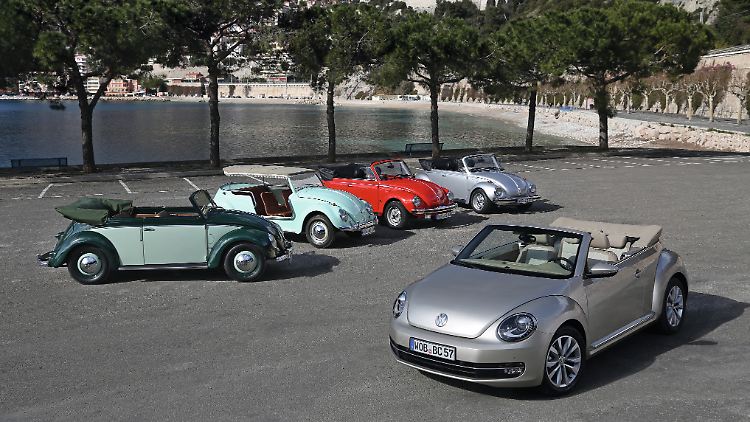

The VW Beetle and its successors were also open.
(Photo: VW)
When Germany was still licking its wounds and the economic miracle was just beginning to gain momentum, body manufacturer Hebmüller applied to Volkswagen for a production order for its Beetle-based convertible. The deal worked. The elegant, 24.5 hp 2+2-seater was officially sold through VW dealers from 1949 onwards for a sinfully expensive 7,500 DM. Hebmüller manufactured 696 vehicles until a major fire destroyed the entire factory in Bergisches Land and the coachbuilder had to file for bankruptcy in 1953.


The first Beetle convertibles came from Hebmüller in Wülfrath or Rometsch in Berlin, but above all from Karmann in Osnabrück.
(Photo: VW)
Parallel to Hebmüller, Karmann from Osnabrück developed its first open Beetle at the end of the 1940s. In contrast to the Hebmüller, the “four-window model” had a “real” back seat, and the top was on the body for more space in the interior. VW ordered exactly 1,000 vehicles in 1949, and production was increased to 10,000 by 1952. The successor, the “open Ovali”, also came from Osnabrück in 1954. Based on the export model, Karmann manufactured around 26,000 units by 1965.
Beautiful gigolo: Karmann-Ghia convertible based on a Beetle
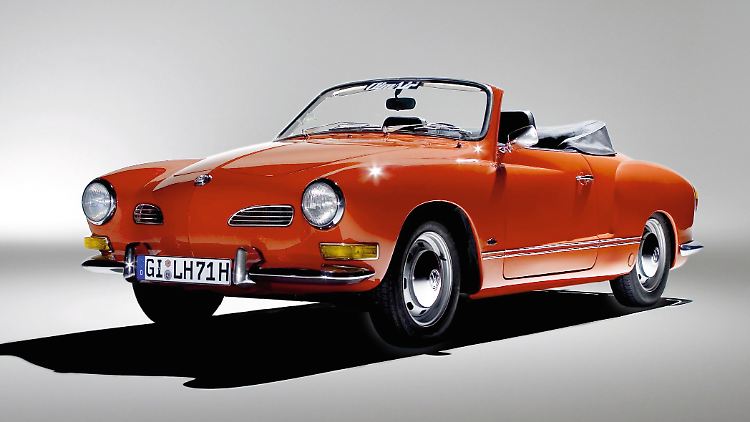

The Karmann Ghia Cabriolet used Beetle technology.
(Photo: VW)
Just as the whole world was gradually taking the sweet open beetle to its heart, a second Luftikus joined the successful car. With the Karman-Ghia Type 14 Cabriolet, a piece of Dolce Vita was parked in the gray North German plain from 1957 onwards. Karmann had Ghia tailor a beguilingly beautiful Italian designer suit using reliable VW technology. A dream guy for the director's wife. Or just for the accountant? The gigolo looked much sportier than he actually was, and therefore hardly got any men behind the wheel. The ladies didn't care. Initially, 22 kW/30 hp was enough for them to feel like they were in a sports car. In the end it was a manageable 37 kW/50 hp. Nevertheless, the housewife Porsche lasted until 1974 and for many people it is still the most beautiful VW convertible of all time. With 80,881 pieces, Karmann's womanizer was never able to scratch the bug.
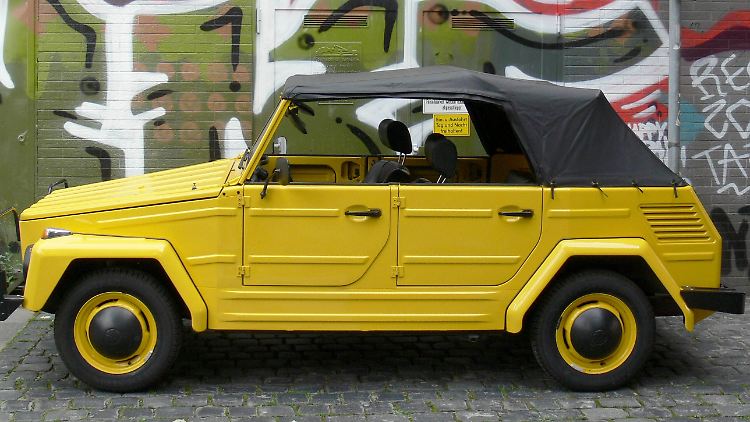

VW Type 181 Kurierwagen: The military off-road vehicle (sometimes referred to as the “Kübelwagen”) was built from 1968 to 1980 and was sold not only to the Bundeswehr but also to other authorities and private individuals.
(Photo: picture alliance / JOKER)
Especially not the type 181 open courier car. Whether the niche convertible is even allowed to ride in the ancestral gallery is certainly a borderline case. His story is quickly told. In 1969 the Bundeswehr needed a replacement for the DKW Munga and commissioned VW. They made a rustic, four-door convertible out of Karmann Ghia, Beetle and Transporter parts with a foldable windshield, plug-in windows and a PVC all-weather hood. The number of units of the civilian version remained manageable until 1980. In the surfing scene, however, “The Thing,” as the Americans called the Type 181, achieved cult status. This was followed by the successor Iltis (1978-1988), an open off-road vehicle for the federal government and for civilians, which later also took part in the Paris-Dakar Rally. Hardly more than a side note from VW's convertible history.
He ran and ran and ran
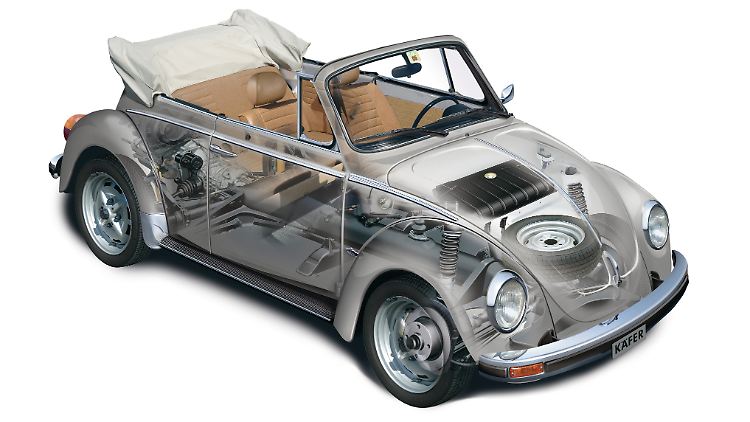

As a 1303 LS convertible, the boxer delivered 50 hp at the rear.
(Photo: VW)
Because over the years it has mainly revolved around the beetle. He has long been sniffing the morning air in all over the world. There seemed to be no limit for him. He ran and ran and ran. As 1300 Cabriolet (1965 – 1966), as 1500 Cabriolet (1966-1970), as 1302 Cabriolet (1970-1972) and finally as 1303 Cabriolet (1972-1980). The final expansion stage no longer had a screw in common with the first Beetle.
As the 1303 LS convertible, the boxer produced 50 hp from 1,600 cubic centimeters in the rear and was built around 160,000 times. On January 10, 1980, the last example rolled off the Karmann production line, a total of 331,847 in 31 years.
“Golf convertible, no thanks”
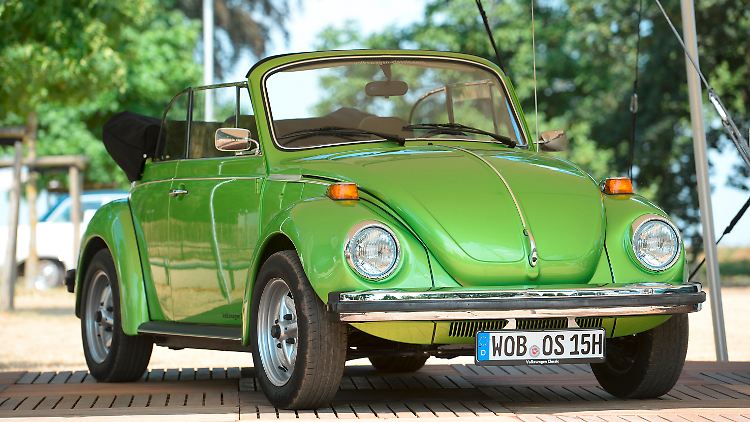

In January 1980, despite vehement protests, production of the open Volkswagen 1303 ended.
(Photo: VW)
Germany cried big tears for its favorite Luftikus, after all, he had accompanied an entire people through the economic miracle years, the Cold War and the flower power era. The fan scene organized protest trips to Wolfsburg and had stickers like “Golf Cabrio, no thanks” printed.
It was all of no use. The Golf I took over air sovereignty in the group on February 14, 1979. For safety reasons, the angular child from Karmann had to wear a roll bar that was both fat and ugly, which quickly earned him the nickname “Strawberry Basket”. But the technically outdated Beetle convertible quickly found its way into the minds of storm-tested German history.
With the Golf Cabriolet, customers not only received a modern chassis, but also a speedy 51 kW/70 hp and, in the fine GL equipment, even an automatic transmission. The 1.6-liter four-cylinder with 110 hp then moved in from the GTI, which finally made the GLI version the hottest wind on the other side of the Mittelland Canal. By 1993, the open Golf I had become the Volkswagen among all convertibles and, with 392,000 units, became the most successful sunbed in the world.
Successor based on Golf III from 1993
With significantly more space, but still poorly ironed, the successor based on the Golf III tried to build on the success from 1993 onwards. He could do everything better. The roof, which could be opened electrically on request, gave a view of the sky in less than 20 seconds, the trunk was larger (plus 50 liters) and crash safety was significantly optimized – but neither it nor the following generation based on it achieved the classic charm of its predecessor Golf IV was based.
Due to moderate success, VW ended its open-air activities in 2002 – and took almost ten years to get back into the sky with the Golf VI. Instead of a bar, rollover modules should now ensure safety in an emergency. They caused the rear headrests to snap up in a split second. As of 2013, up to 195 kW/265 hp were under the hood of the last Golf convertible. But even the Golf R could only delay the end at best. In 2016 VW let the open Golf die. After 770,039 copies.
Inheritance sneaker New Beetle
What then followed with the New Beetle was an attempt to reanimate a feeling that had long only existed in the garages of Beetle fans. The original became immortal and lived on as a legend among collectors and contemporary witnesses.
However, the Golf-based round piece, which was apostrophized as a designated retro beetle, was little more than an overly large and uncharming legacy sneaker. At least in the eyes of many VW customers. Cult simply cannot be copied. The open versions, the New Beetle Cabriolet (2003-2010) and later the Beetle Cabriolet (2012-2019) also had to experience this. Although they were certainly technically ahead of many of their classmates, the audience simply didn't get excited. The great success and proof of love did not materialize.
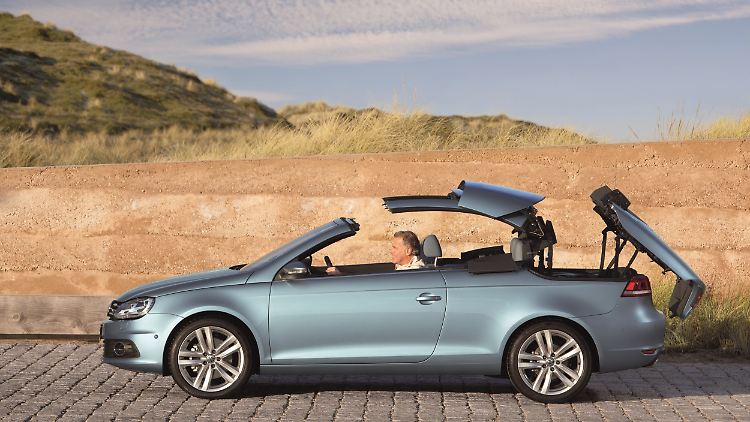

The VW Eos was not a great success.
This was even more true for the four-seater Eos (2006-2015), named after the Greek goddess of the dawn. But there was little divine about Eos. The 4.41 meter long convertible coupé followed the trend at the time of folding steel roofs and thus brought a new safety standard to the Wolfsburg convertible world. Unfortunately, the tin hat was often not completely tight and not really tactile.
Anyone who really loved convertibles rarely fell in love with an Eos. The cheerless folding-roof VW ran out of steam halfway through its life and demand fell drastically. In the end, 230,000 Eos were sold.


The VW T-Roc Cabrio will not have a successor.
(Photo: VW)
The T-Roc Cabriolet will not come close to this number when it retires in 2025 after just over three years. The concept of cut-up SUVs will probably later go down in history books as a bad quirk of the zeitgeist. Putting this failed construct in the historical context of the legendary Beetle Cabriolet feels like a bad joke of history anyway.



















